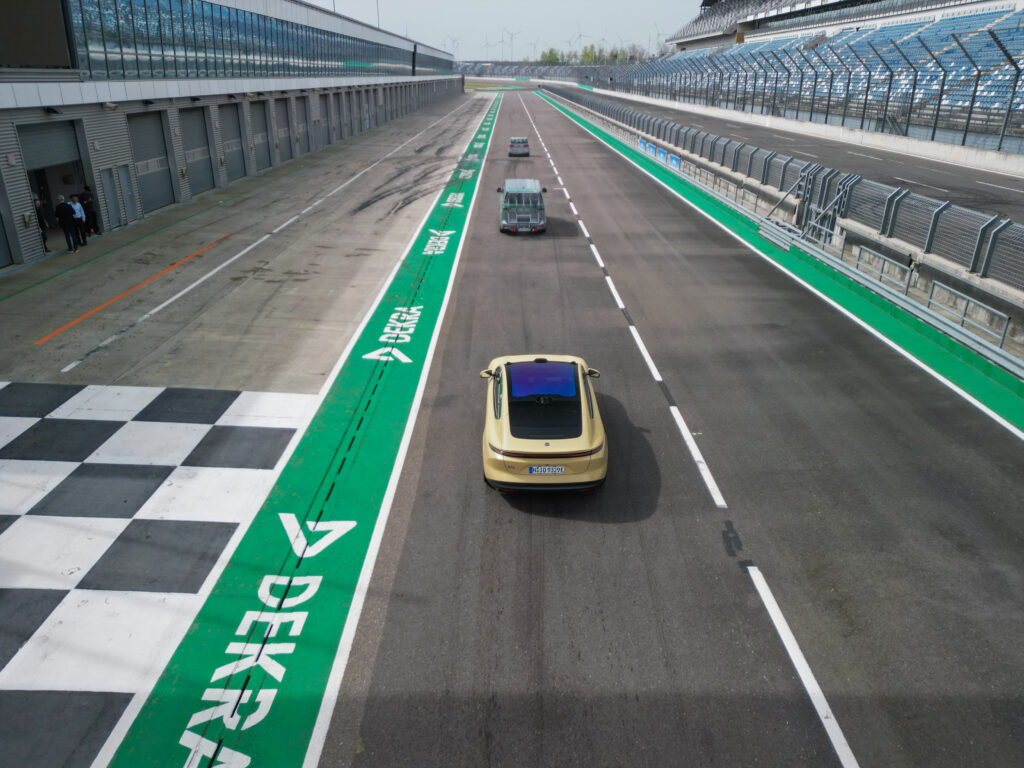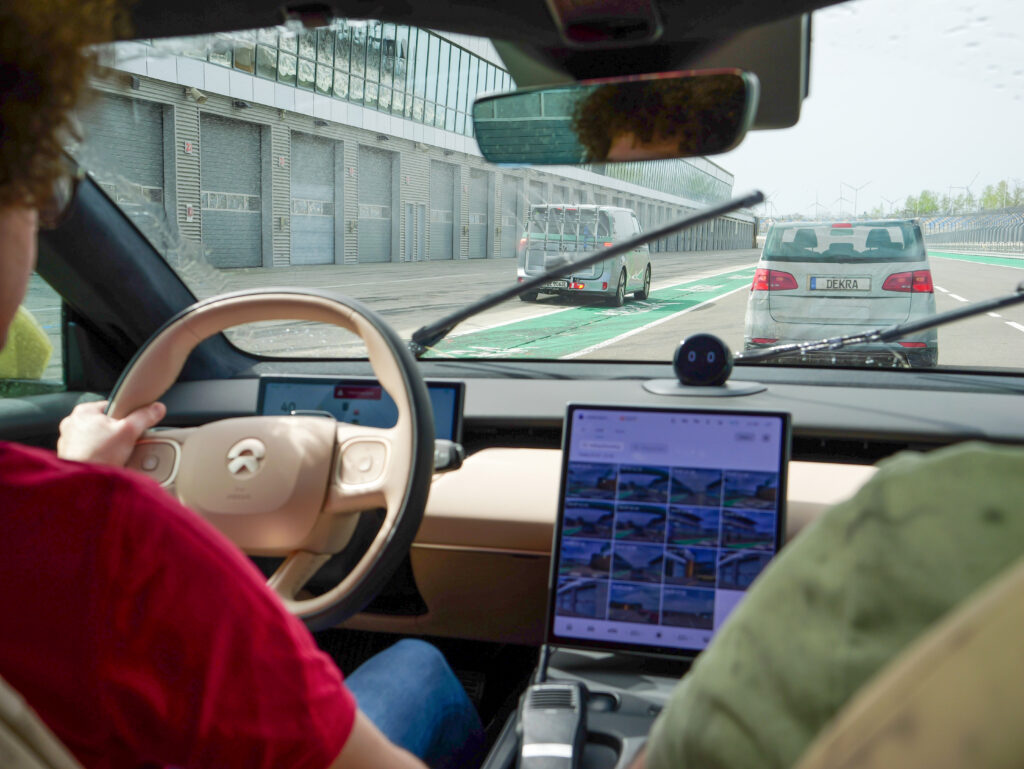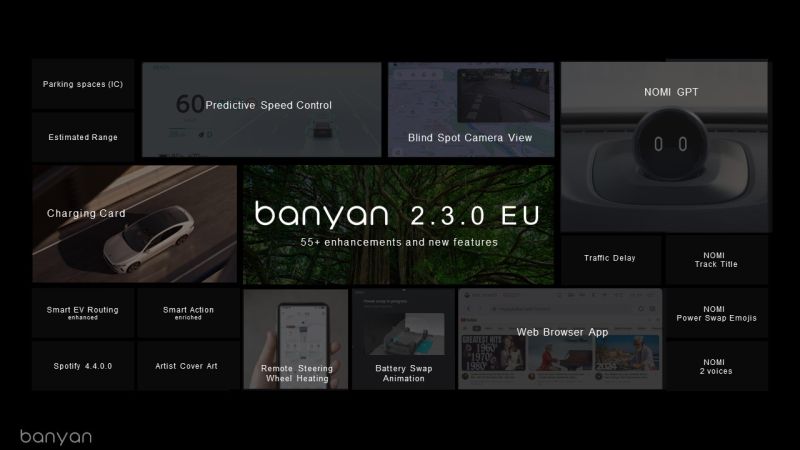Nio has officially opened its Smart Driving Technology Center in Schönefeld, near Berlin, Germany. It is Nio’s first such center outside of China and is further proof of the company’s international ambitions.
“The unveiling of our European Smart Driving Technology Center in Berlin marks a pivotal moment in our journey as a premium global brand,” said Hui Zhang, Nio’s group VP, during the center’s launch. He added that the company’s European team has grown from 20 people in 2015 to 900 in 2024.
“Smart Driving technologies epitomize our essence as a forward-thinking, smart EV company,” Zhang continued. “Recognizing the dynamic challenges the market presents, we selected Berlin, the capital of startups and technology, as the place to lead our development of smart driving solutions that will soon benefit users in Europe.
“Through Nio’s resilience and innovative spirit, we are poised to explore the big potential to complete our global development network and to provide tailor-made, user-favorable tech solutions, from Europe for Europe.”
Berlin Automotive Cluster
The Smart Driving Technology Center is close to Nio’s Berlin Innovation Center, which opened in 2023. The two facilities will cooperate closely to develop technologies specifically for use in Europe. The new center is also close to Berlin Brandenburg Airport, and only an hour’s drive from Dekra’s unique Lausitzring test facility and race circuit.
As a guest at the official opening, AAVI was able to witness firsthand two of the OEM’s latest ADAS developments via live demonstrations on the Lausitzring test track.
The new features are enabled by the car maker’s in-house-developed 1,016 TOPS Adam supercomputing system, which powers a high-end sensor system that Nio calls Aquila, featuring 33 sensors to continuously monitor the car’s surroundings. Aquila includes Seyond’s Falcon lidar featuring a detection range of 500m, to further improve the precision and robustness of the assistance systems.
Nio has placed the lidar above the windshield in a ‘watchtower’ design, to ensure an unobstructed view and help the lidar see as far as possible. The company has installed the same sensor configuration across its entire model range, to streamline software development moving forward.
Improved safety
Heavy rain can be a problem for ADAS without lidar, as it can seriously limit the effectiveness of various emergency braking functions. Rain can sometimes even lead to the failure of camera-based systems. Nio says its Aquila sensing system can detect obstacles in front of the car, even during very heavy precipitation. It does this by using lidar, in combination with camera and radar, to see through the rainwater, ensuring the onboard systems react faster and more consistently than if there were no lidar installed.

A demonstration at the Lausitzring was designed to show how a Nio vehicle is far less likely to hit a stationary vehicle in a heavy downpour, should the car it is following suddenly veer to one side to avoid hitting the same stationary vehicle. The tests showed that in most instances, the Nio lidar ensured the car reacted a fraction of a second more quickly than if it had to rely on cameras or the driver alone – avoiding a collision.

Although not demonstrated on the day, a further safety feature enabled by Aquila is a junction assistant that displays the area next to the car on the central monitor when it is turning. As a result, cyclists adjacent to the car can now be identified, even if they are in the driver’s blind spot.
Convenience and comfort
Nio’s suite of onboard sensors also help to improve driver convenience. A second demonstration at the Lausitzring showed how a newly improved parking assistant enables the car to identify parking spaces available in the immediate vicinity. All the driver has to do is select one of them using a touch command on the screen and the car will park automatically.
The latest parking assistant update takes point clouds from the lidar to create a much more detailed overview of the spaces available than would otherwise be possible with just cameras alone. This is translated to a digital display on the dashboard, enabling the driver to choose the best possible spot – for example, by avoiding spaces with pillars.

European user requirements
During the event, Nio emphasized how the user experience offered by its vehicles is shaped by continuous customer feedback, reflecting ‘local’ customs and preferences, and how it believes in developing its own tailor-made solutions wherever possible – hence its decision to open the Smart Driving Technology Center in the heart of Europe to spearhead the in-house development of ADAS features for European models moving forward.
The company believes in-house software development will enable it to respond to user requests more quickly, with the latest features delivered via OTA updates to ensure onboard systems are kept fresh and up to date.
Mirko Reuter, Nio’s senior director of AD, will oversee the development and validation of all vehicle-specific systems from the new Schönefeld facility, with a strong focus on European user needs – which, like the regulatory requirements for assisted driving, often differ from China.
“We are very user-centric driven,” Reuter told AAVI during a brief break between demos. He explained how Nio’s latest OTA update, Banyan 2.3.0 EU, delivered at the start of April, includes a new feature to help European drivers more intelligently adjust their speed on rural roads for a more comfortable experience.
“These are narrow, winding roads that aren’t ideal for cruise control, because you need to adapt the speed to the curvature of the road,” Reuter continued. “That’s why we used 2.3.0 to launch predictive speed control as a feature on top of ACC, which basically takes the map data and the curvature of the road coming up, and then adjusts the speed accordingly so you can drive more confidently on these roads. We also use the HMI to convey this data to the driver, showing the turning radius for the curves ahead, while decelerating the car appropriately.”
He said the same OTA update helped enhance the parking assistant feature: “We also used it to introduce a new visualization for the HMI on the central display that is more intuitive and representative of the parking situation. For example, if the car detects a parking space, you will immediately see this in your primary field-of-view.”
Reuter was quick to stress that, “Such features use all three sets of [sensor] modalities that we have on board, combining high-resolution lidar with cameras that are very focused on specific areas, alongside radars. All three are fused together and are used by all our features. From the simplest emergency braking all the way to our highway driver assistance featuring lane changes, they all use all of these elements.”

Precision lidar
However, he admitted that lidar provides an exceptionally high level of accuracy. “We have a very dense point cloud with centimeter-level precision on the distance to any objects, giving a full view of what’s around you. Other sensor types can detect objects, but precisely understanding exactly where and what it is that you’re seeing is more of a challenge, especially regarding distance. With lidar, it’s much clearer.”
Despite recent developments in solid-state and new frequency-modulated continuous wave (FMCW) lidar technology, Reuter remains happy with Nio’s hardware: “We still consider this lidar to be state of the art, as it was when we introduced it almost two years ago. It can deliver more than 100 scan lines vertically – with more than 400 scan lines vertically in the high-resolution area – returning millions of points every second. We went for the very best to ensure we can accommodate future needs. This is a high-performance lidar combined with four Nvidia Orin SoCs, giving us a lot of computational power and the ability to scale in the future.”
As for the future, Reuter remained tight-lipped, although he did share a few details on a hardware upgrade: “Our next-generation platform, which we call NT3.0 or Aquila 2.0, will feature a very similar setup, but we’re going to add side lidars on top of the sensors that we have today, to give users more information in very crowded, dense urban scenarios.”


